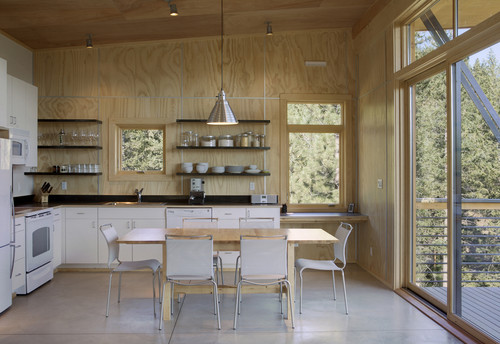If you've been reading my blogs or
following my Facebook posts for awhile, you know I love discovering innovative
ideas for design and materials. This month I'll introduce you to new ways to
think about using two basics... plywood and paper!
Plywood: One of my favorites lately is
plywood. This versatile material is strong and relatively inexpensive. A
standard workhorse in the building industry, plywood has a simple beauty that
is justified to be highlighted in design.
Here are a few
examples I've found of plywood being used on ceilings and walls... who knew it
could be so beautiful? These are from a project I found on Dezeen - click here to see more.
I found these on Houzz - so gorgeous!
Paper: Would you consider paper as a viable choice
when considering floor covering? Certainly not me! That is until I read about
this blogger and how she used paper to create the illusion of wood plank
floors.
A bloggist known as Freckle Face Girl, whose real first name is Chris, was invited by the website Remodelaholic to present a tutorial on how it was done. Chris, aka Freckle Face Girl, credits the origin of her idea to a floor she saw at Recyclart, showing a floor in Hawaii on which crumpled brown paper bags were pasted.
A bloggist known as Freckle Face Girl, whose real first name is Chris, was invited by the website Remodelaholic to present a tutorial on how it was done. Chris, aka Freckle Face Girl, credits the origin of her idea to a floor she saw at Recyclart, showing a floor in Hawaii on which crumpled brown paper bags were pasted.
She took that a step further, using the builders paper cut
into strips to simulate planks. The process detailed at Remodelaholic was to
take the same heavy paper builders roll out to protect flooring as they work on
home interiors, and paint it to look like wood plank flooring. It actually
looks like distressed reclaimed wood plank flooring.
Click here to find read Freckle Face Girl's paper flooring
recipe (she also says she used real tacks for effect).


























